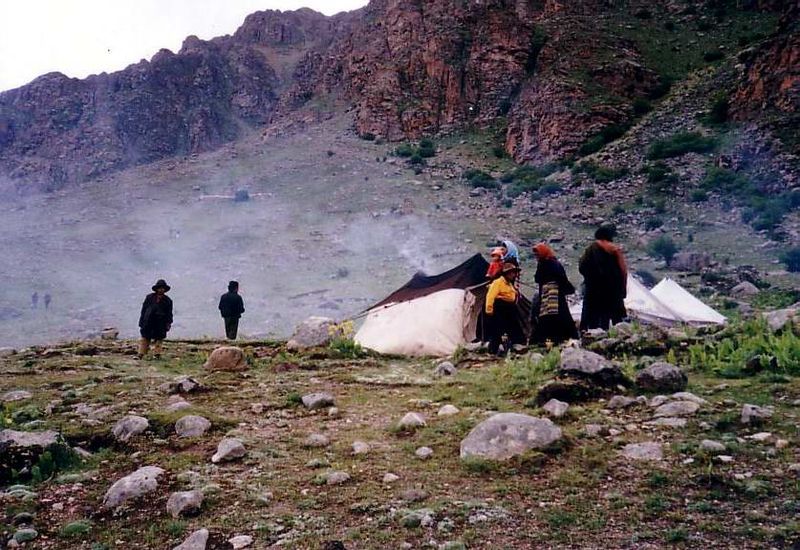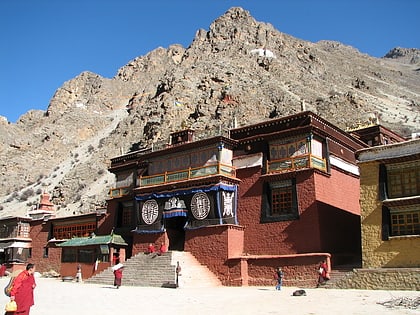Tsurphu Monastery


Facts and practical information
Nestled in the rugged terrain of the Tibetan Plateau, the Tsurphu Monastery stands as a testament to the enduring spiritual heritage of Tibetan Buddhism. This revered temple, located in the Tolung Valley of Tibet, China, is the traditional seat of the Karma Kagyu school, one of the four main schools of Tibetan Buddhism.
Founded in 1189 by the first Karmapa, Düsum Khyenpa, Tsurphu Monastery has been a significant center for religious study, pilgrimage, and the arts for over 800 years. The monastery complex, sprawling over an area of 300,000 square meters, is a stunning representation of Tibetan religious architecture, with its intricately decorated prayer halls, vibrant frescoes, and statues of deities and important lamas.
One of the most significant features of Tsurphu Monastery is its role as the traditional residence of the Karmapa, the leader of the Karma Kagyu lineage. The monastery houses a golden stupa that contains the relics of the 16th Karmapa, making it a focal point for devotees seeking blessings and inspiration.
Over the centuries, Tsurphu has faced periods of decline and restoration, echoing the tumultuous history of the region. Despite these challenges, the monastery remains a beacon of Tibetan culture and religion, attracting thousands of pilgrims and visitors each year. Its annual festivals, particularly the Tsurphu Cham Dance, showcase the rich traditions of monastic dance and music, drawing cultural enthusiasts from around the globe.
